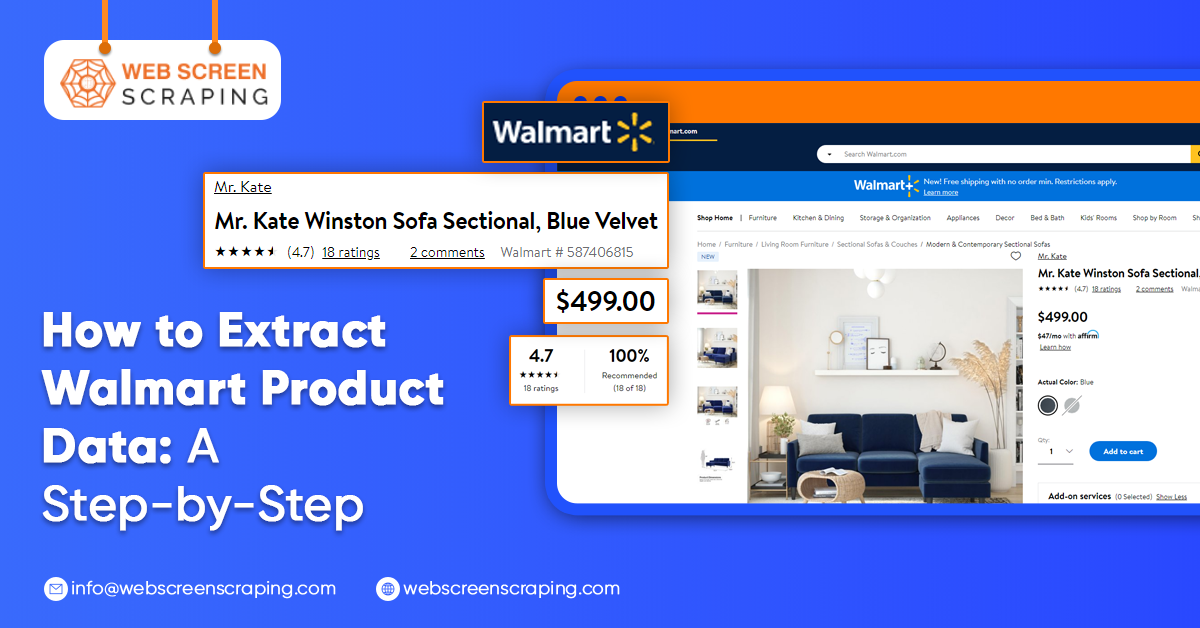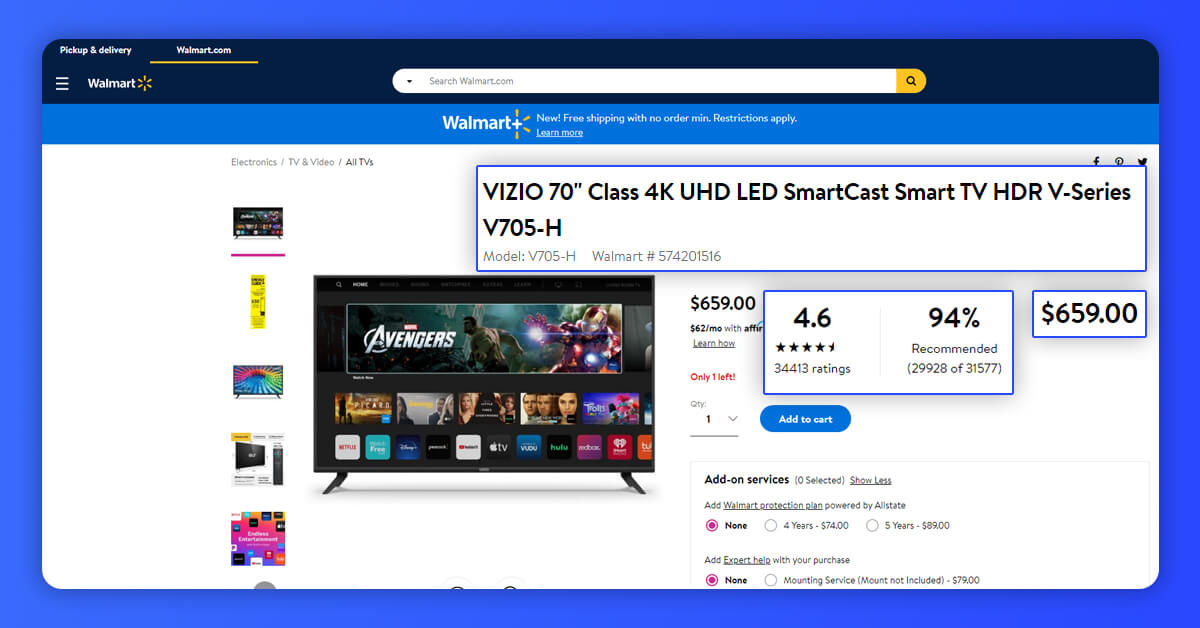What are the Reasons to Scrape Walmart Product Data?
Walmart product data scraping can serve various purposes for business, research, and individuals. Here are some common reasons why people may want to extract Walmart product data:
Market Research
Scraping Walmart product data is a valuable practice that can offer a multitude of benefits to businesses, researchers, and individuals alike. One compelling reason to engage in this activity is for market research purposes. One of the largest retailers globally, Walmart hosts a vast array of products. By scraping its data, researchers can gain insights.
As one of the largest retailers globally, Walmart sports a vast array of products. By scraping its data, researchers can gain insights into product trends, customer preferences, and emerging market opportunities. These insights can help businesses make informed decisions, identify gaps in the market, and tailor their offering to meet customer demand effectively.
Price Comparison
Price comparison is another compelling benefit of Walmart product data scraping. Consumers and businesses need to find the best deals in a competitive marketplace. Through web scraping, individuals can easily compare prices across various sellers and retailers on Walmart’s platform. This information empowers consumers to make cost-effective purchasing decisions while businesses can fine-tune their pricing strategies to remain competitive and appealing to customers.
Competitive Analysis
Scraping Walmart product data is a smart way for businesses to learn about their competitors in the retail industry. By collecting information from Walmart's product listings, like descriptions, prices, ratings, and customer reviews, companies can find out what their competitors are up to.
Checking out product ratings and reviews also helps companies know what customers think about their products and their quality. This way, you can figure out where you are doing well and what not. Moreover, keeping an eye on product availability and stock levels through web scraping helps businesses take advantage of shortages or stand out by having products in stock. It also helps them set the right prices and improve their position in the market.
Inventory Management
Another reason you should extract Walmart product data is that it provides excellent insights into your stock that will help efficiently manage your inventory. You can avoid overstocking or understocking, minimizing holding costs and lost sales opportunities. Additionally, by analyzing the data, companies can identify popular products, enabling them to allocate resources more efficiently.
Furthermore, when companies examine the data, they can pinpoint which products are in high demand. This helps them use their resources more effectively. Research indicates that businesses that integrate web scraping into their inventory management approaches can reduce excess inventory significantly, leading to cost savings of around 20%. Additionally, they can boost their overall revenue by 10-15%, thanks to enhanced pricing and demand forecasting.
Content Monetization
Content Monetization is another reason why you should extract Walmart product data. When you scrape Walmart data, you can access a vast repository of information about products, prices, customer reviews, and trends. This data can be used to create highly engaging and relevant content, such as product reviews, buying guides, and comparison articles. Such content is not only valuable to consumers seeking information before making a purchase. Still, it can also be monetized through affiliate marketing, where you can earn commissions by promoting the products.



